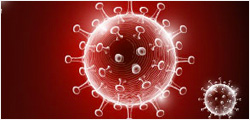BACKGROUND:
Surface proteins YbgF and PrsA are major seroreactive antigens of Rickettsia heilongjiangensis, the etiological agent of Far-Eastern spotted fever. This study investigated their potential immunogenicity for protective immunity.
METHODS:
Recombinant YbgF and PrsA were used to immunize C3H/HeN mice and rickettsial loads in immunized mouse organs were assessed after R. heilongjiangensis challenge. Anti-sera from immunized mice were applied to neutralize rickettsiae. CD4+ and CD8+ T cells isolated from R. heilongjiangensis-infected mice were stimulated with YbgF or PrsA, and proliferation and cytokine production assessed.
RESULTS:
The IgG2a/IgG1 ratio of sera was markedly increased in YbgF-immunize... More
BACKGROUND:
Surface proteins YbgF and PrsA are major seroreactive antigens of Rickettsia heilongjiangensis, the etiological agent of Far-Eastern spotted fever. This study investigated their potential immunogenicity for protective immunity.
METHODS:
Recombinant YbgF and PrsA were used to immunize C3H/HeN mice and rickettsial loads in immunized mouse organs were assessed after R. heilongjiangensis challenge. Anti-sera from immunized mice were applied to neutralize rickettsiae. CD4+ and CD8+ T cells isolated from R. heilongjiangensis-infected mice were stimulated with YbgF or PrsA, and proliferation and cytokine production assessed.
RESULTS:
The IgG2a/IgG1 ratio of sera was markedly increased in YbgF-immunized mice but was unaltered in PrsA-immunized mice after immunization. The rickettsial load in YbgF-immunized mice was significantly lower than in PrsA-immunized mice after R. heilongjiangensis challenge. Incubation with anti-serum to YbgF, but not PrsA, significantly reduced the number of rickettsiae adhering to and invading endothelial cells. The proliferation level and tumor necrosis factor-α secretion level of CD4+ T cells from R. heilongjiangensis-infected mice were significantly higher than in uninfected mice after stimulation with YbgF but not PrsA.
CONCLUSION:
YbgF is a novel protective antigen that induces a Th1-type of protective immune response against R. heilongjiangensis infection.



































